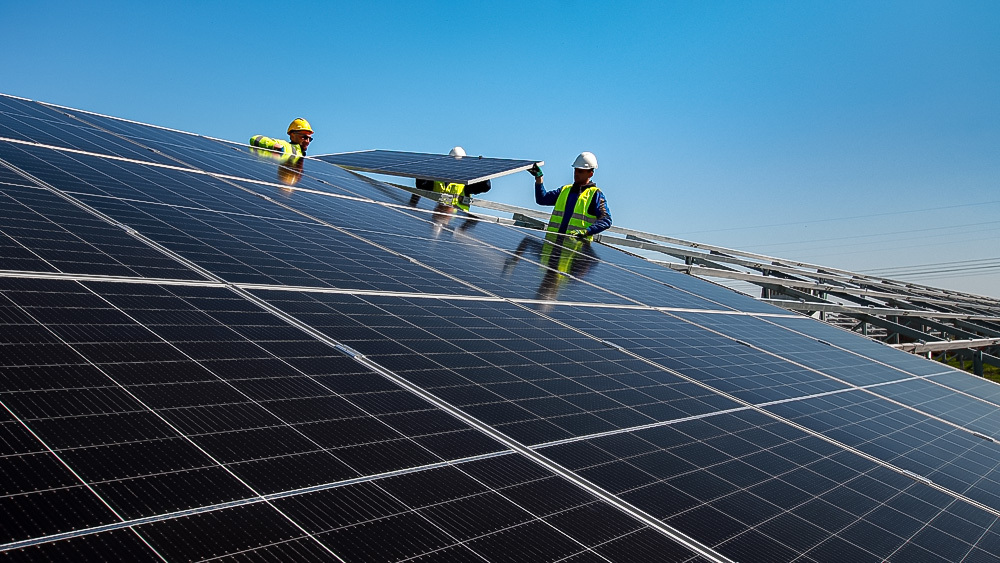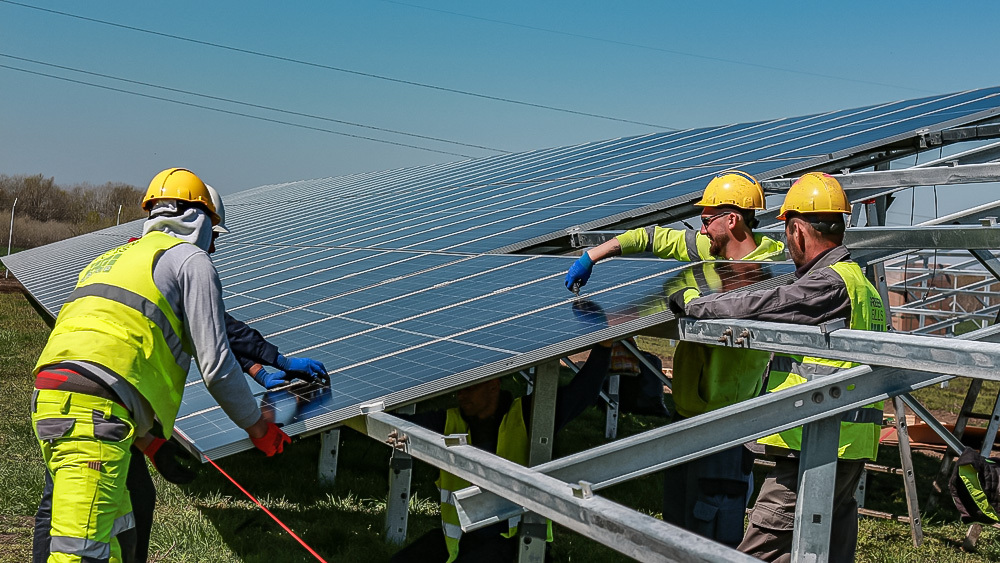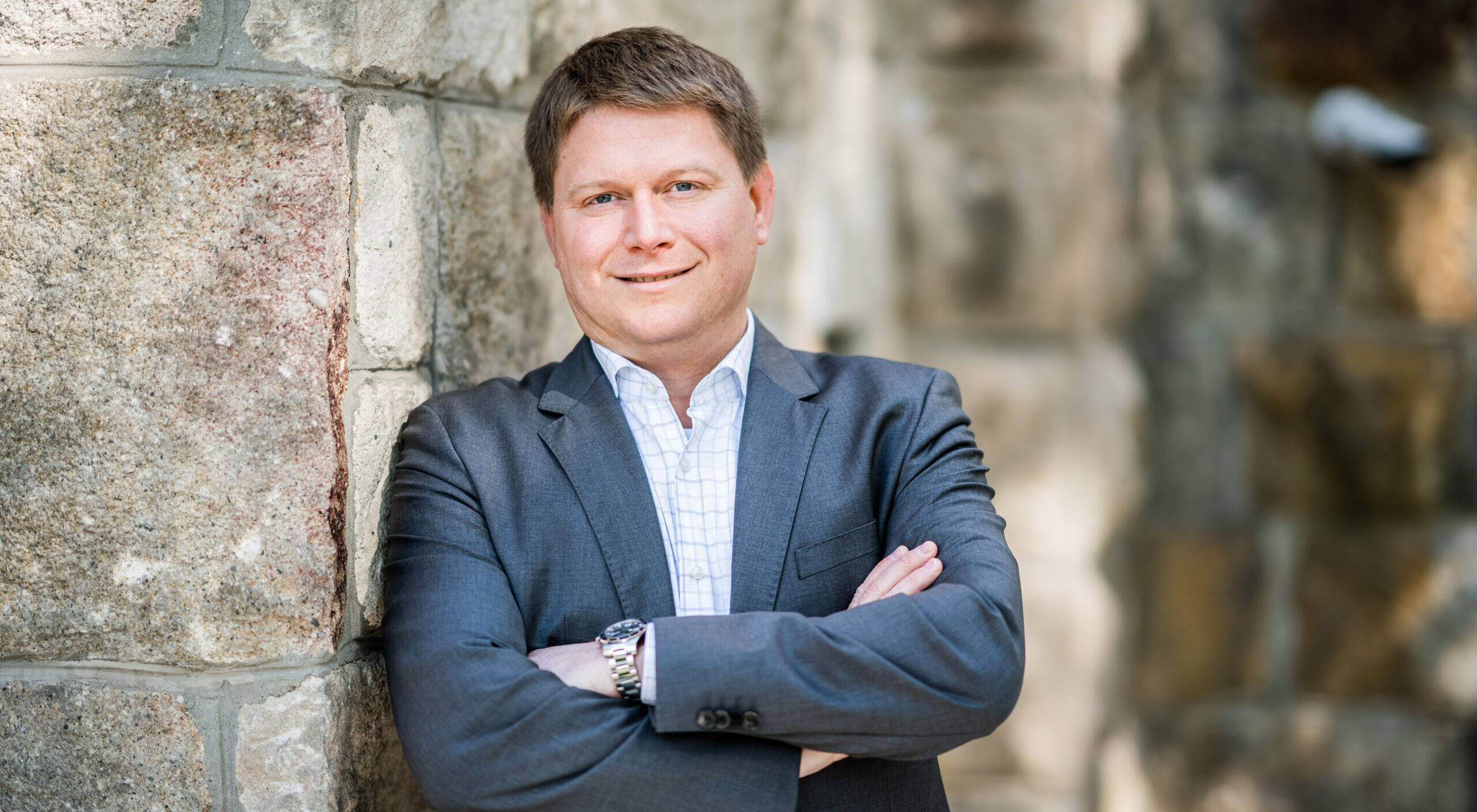21-08-2022
Network development and capacity expansion must go hand in hand to maintain the country’s long-term security of energy supply. Hungary’s ever-increasing electricity demand needs to be met with clean energy that is affordable and predictable. With the current energy prices and the volatility of sources and supply chains, domestically produced renewable electricity will become increasingly competitive,” said Gábor Farkas, CEO of SolServices Ltd., the solar park developer that has developed and licensed the most large-scale power plant capacity in Hungary.
Anyone who has followed the professional and political decisions on renewable energy has seen that there have been several significant changes in the regulatory environment for the industry in recent times. How do you assess the current domestic industry environment? I could ask, where do we go from here?
The installed photovoltaic capacity in Hungary has grown at the fastest rate in the European Union over the past four years, exceeding 3200 MW, which is in line with the targets set in the National Energy Strategy. A new challenge, however, is that with this installed capacity we have reached the operational safety limit, where future deployment options need to be reviewed.
As a result of a fundamental overhaul of the grid connection procedure, the electricity company is now responsible for examining the technical conditions for the inclusion of new projects in the grid twice a year. In the capacity allocation, first published in May, to the unpleasant surprise of project developers, the grid operating companies announced that, for the time being, no new projects could be connected to the grid, even for self-consumption investments, through a publication procedure.
And one of the keys to any project development is public network connectivity. Those who have a live connection contract can develop their projects, but new developments face a very serious barrier to connection. The timeliness of removing the barriers to renewables is also underlined by the rising price environment, with generating companies, like the general public, showing increasing interest in solutions that can at least partially cover their own energy supply.
The next publication will be due by 31 January 2023; we look forward to seeing the calculations and when they will be able to ensure connectivity for new projects. At the moment, I could compare the industry to a race horse in a state of high anxiety waiting for the start.
At the same time, we welcome the comprehensive grid reconstruction and development projects launched by the electricity companies and Mavir to enable the integration of significant renewable capacity back into the grid in the future. The integration of weather-dependent renewables into the system is also helped by the fact that in the latest Metar tender, the Hungarian Energy and Utility Regulatory Office (MEKH) was among the first in the EU to require that a resilience service – energy storage – of up to 10% of the installed capacity of the power plant applied for must be installed for the project. In addition, Mavir’s latest amendment to its plant regulations, which entered into force at the end of July, has further tightened the flexibility requirements for the connection of renewable generation units: a prior flexibility solution of up to 30 percent of nominal capacity is now required for all new projects.

Lumen Park Szolnok – 2022
What solution would you prefer?
On the developer side, we see that the power companies want to reinforce the grid first and then talk about new capacity to be allocated, while we would urge that the two processes go in parallel, because if we start allocating new connection licences only after the grid has been developed, we fear that the country will lose a lot of time. The grid development process in question takes 2-3 years, while the preparation and official approval of a solar investment takes about 1.5 years. We believe that the dynamic project development seen over the last 4 years can only continue if it is not only years before meaningful project development can be resumed.
We welcome any dialogue that promotes a common reflection on how to further reduce dependencies in the current energy crisis. The quickest solution is to build new renewable power plants, which do not need fuel and therefore have no associated costs and no sensitive fuel transport routes. One of the reactions of Western Europe and the European Union to the energy crisis is to increase renewable production and, if possible, accelerate new installations, and Hungary should not be left out of this.
There are two main ways to speed this up: network development, which is underway across Europe, and ensuring that projects are actually delivered on time and on schedule. One of the objectives of the European Energy Independence Plan, REPowerEU, is precisely to review the methodology for obtaining permits in the EU and to find ways of speeding up the process, of introducing one-stop shops, so that as much electricity as possible that can replace natural gas is produced in the country concerned. Otherwise, I think that the winter ahead will give a new impetus to the increase in renewable electricity production, the necessary grid improvements and the transition from natural gas to green electricity in general.
How do you see the industry’s international operating environment and prospects evolving, particularly with regard to supply chain issues and commodity price increases?
Difficulties in the market for raw materials and components, partly due to the pandemic, continue to drive up prices. However, the supply of raw materials is no longer the biggest challenge, as Asia, which dominates solar cell production, has now caught up and has successfully made up for lost time due to downtime, so that the solar panels that are the lifeblood of solar power plants are available on time. However, the Russian-Ukrainian war has made it more difficult to source the other main component of the investment, metal support structures, after the two countries played a major role in supplying them. It is of course impossible to say at this stage when these access routes will be available again.
At the same time, the main challenges facing the industry today are rising global inflation and the rising cost of financing projects. In general, the cost of financing major domestic infrastructure projects has practically tripled in the last three quarters of the year, which, combined with the rising cost of raw materials and components, is also affecting the performance of projects.
Where is SolServices now in the development and implementation of solar parks?
Since 2018, SolServices Ltd. has developed and licensed a total of 1,000 MW of photovoltaic installed capacity in Hungary, making it a leading player in the sector. The 1,000 MW of capacity we have licensed will be fully commercially operational by the end of 2023, meaning that green energy production will start in all parks. The Lumen Park Szolnok is an important milestone in the life of our company, as it is our first solar park to be self-invested, with an installed capacity of 140 MW, and will be the largest in the country and the first new generation, or nature-friendly, solar power plant. In August, we will start the construction of another of our own projects, a 70 MW solar power plant in Szászberek, not far from Szolnok, which will also be designed according to the same ecological principles as the Szolnok plant, and will have a fixed support structure, also in a greenfield environment. The speed at which solar technology is developing is illustrated by the fact that, while in Szolnok we used panels of around 600 watts, which were purchased about a year ago, the project in Sasberek will have panels of around 650 watts, which will further improve the specific land use of the park.
We are also looking for further development opportunities and new technologies and technical solutions that can be used to develop further parks in Hungary to a ready-to-build state.

Lumen Park Szolnok – 2022
Before we move on, let’s go back to the solar park in Szolnok. What is the current status of the project?
Construction of the solar farm started in the summer of 2021 and is expected to be fully completed by the end of August 2022 at the latest. In May this year, we partially commissioned the plant, and in mid-July we reached the stage where the plant, with a total installed capacity of 140 MW, can now supply more than 50 MW of power to the national grid as part of a test run, and the remaining part will be commissioned by the end of August.
The Lumen Park Szolnok will also be a significant factor in the region’s electricity supply, capable of generating the equivalent of 40 percent of the county’s total residential electricity consumption, while saving the atmosphere from around 39 thousand tonnes of carbon dioxide emissions per year. To finance the project, SolServices has signed the largest corporate green loan agreement on the Hungarian market in the past year, worth HUF 28 billion, with UniCredit Bank.
In the light of the events of recent weeks and months, such developments seem to be gaining in importance. What is your experience? What feedback are you getting?
In the current energy crisis, it is precisely such investments that are justified. Security of supply can only be ensured by the increasing penetration of this type of infrastructure, as Hungary’s annual electricity consumption is rising virtually steadily, a trend that even the pandemic has not been able to halt. Further growth in consumption needs to be met with clean energy that is affordable and predictable. At current energy prices and with the volatility of sources and supply chains, domestically produced electricity from renewable sources will become increasingly competitive.
What aspects were taken into account when you invested in Lumen Park Szolnok?
From the very beginning, we have focused on two important aspects in the development of our solar energy projects: the implementation of power parks with high installed capacity, and the development of a methodology to ensure that these parks provide a favourable environment for the local ecosystem, flora and fauna.
At a time when the typical domestic project size was only 0.5 MW, covering an area of less than 1.5 hectares, we said that security of supply could only be guaranteed if the domestic power plant stock was renewed in a meaningful way, and that it was not enough to install power plants in the small size range, so we deliberately focused on the nominal size range of almost 50 MW. Our Szolnok investment is one such example: there are two large power plant units next to each other, with a total gross installed capacity of 140 MW, making Szolnok the largest of this type of investment in the country.
On the other hand, it has been our belief from the very beginning that the use of such a large area should be planned in an environmentally conscious and ecologically sound way. We are convinced that not only should we aim to generate as much green electricity as possible, but that the facility itself should also be designed in a nature-friendly way. It is a question of using land that can have a useful ecological function, returning it to the natural cycle, providing a habitat for a number of plant and animal species.
How can the latter be achieved?
As a result of a wide-ranging expert collaboration initiated by SolServices earlier this year, a unique European guide has been produced to support industry players in the development, construction and operation of next-generation solar parks in a nature-friendly way. It is a ground-breaking publication that is the first in the Central and Eastern European region to systematise and adapt best Western European practice to the domestic context. We have involved a wide range of industry stakeholders, including renewable energy companies, environmentalists, beekeepers’ association representatives and representatives of national parks, and together we have produced a set of recommendations on principles and practical steps to be taken to strengthen the habitat function of solar parks. The publication was presented to a professional audience at the Business Council for Sustainable Development in Hungary (BCSDH) event in March and the feedback was clearly positive. We are confident that its contents will be widely used by market players and even by public authorities.
In any case, SolServices is gradually incorporating the principles set out in the professional guidelines into the Szolnok project, making Lumen Park Szolnok the first solar park in Hungary to integrate ecologically conscious management principles. At the same time, the professional guidelines are not a set of requirements that must be implemented in every region, but each project must be examined in its own micro-environment and the tools to be used should be selected on the basis of the values to be protected. In the future, we intend to carry out further eco-sustainable investments in our own development under the Lumen Park brand.
What exactly does the nature-friendly concept mean, what investment elements serve this purpose?
In Hungary, there are quite strict rules that determine which areas are suitable for this type of solar energy development. Currently, only greenfield sites are available in this size range.
In addition to providing habitat and a source of nutrients for the animals, the conscious establishment of vegetation cover, for example by selecting species that are optimal for the power plant, has long-term operational benefits and can in itself ensure optimised maintenance, as one of the biggest challenges in the operation of solar farms is the maintenance of green spaces. With a minimum of care, solar parks can be made bird-friendly, as we have done in the vicinity of the project site in Szolnok, where we have redesigned and extended existing and new wiring to minimise the risk of electrocution and collisions. In addition, we also plan to develop reptile and insect-friendly solutions, such as insect shelters, reptile resting places and hiding places.
These are all small but important investments that can make a big difference. Crucially, the solar farm has little foreign matter in the soil, more than 90 per cent of the area is shaded at most, no chemicals are used and the humus layer is not deposited. A form of fallowing is therefore also carried out on the solar farm site, so that the quality of land degraded, eviscerated and over-fertilised by agriculture can be improved.
Although the implementation of the nature-friendly concept means minimal additional investment costs – in the case of Lumen Park Szolnok only 0.1 percent of the investment cost – it results in significant savings on the operational side.
What opportunities are there for SolServices in this domestic and international environment?
The challenges are indeed many, but we believe that the future is definitely photovoltaic power generation and large-scale solar farms. Despite the difficulties, we are looking for new development opportunities. We continue to explore the potential of Hungarian water bodies for the energy use of floating solar power plants, as well as the possibility of establishing classical agro-photovoltaic systems and the domestic application of industrial-scale battery energy storage, for which we are already in the process of business planning, negotiating financing with banks and building partnerships. We will do our utmost to access new connection points and to announce new projects in the near future, as the alpha and omega of our industry is the availability and accessibility of grid connection capacity.
The interview with Dr. Gábor Farkas was published on portfolio.hu on 12 August 2022.
(Photo: portfolio.hu and SolServices/Lumen Park Szolnok)
